


The arms here are generally thicker and slightly less regular than in SbI galaxies. The range it, absolute luminosity of the illustrated galaxies is only 1.5 mag from -22m.60 to-21m.11.
A particularly interesting case is NGC 4569 (M90), with its massive, smooth, but regular system of inner and outer arms. The whole of the disk is covered by the spiral pattern, with prominent dust lanes defining the inner arms.
Notice the very regular but faint outer arms in NGC 3504, which is a transition galaxy to an SBb system. The one nearly linear dust lane on the SE side is characteristic of classical SBb systems such as NGC 1300 (Sandage, 1961, p. 45) and serves, in this case, as a diagnostic. There is a similar but less pronounced linear dust feature along the NE bar in the SB galaxy NGC 4593 shown in the upper right. Note also the low surface brightness of the outer arms of this galaxy.
The arms in NGC 7331, the brightest galaxy shown, are relatively thick, as in M31 which is represented here from a 1.2-meter Palomar Schmidt plate. The thickness and multiplicity of the arms in NGC 615 is also similar.
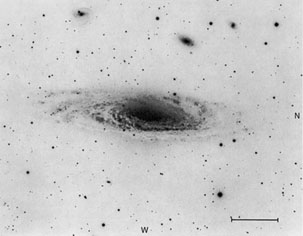
NGC 7331 P200-64-H Sb(rs)I-II -22m.60 820 km/s | 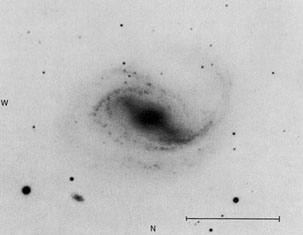
NGC 4593 P200-929-S SBb(rs)I-II -22m.35 2698 km/s |
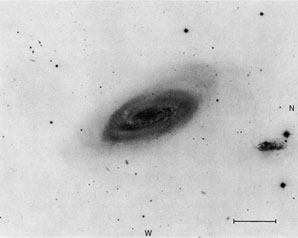
NGC 4569 M90 P200-12-Bm Sab(s)I-II -22m.31V -261 km/s | 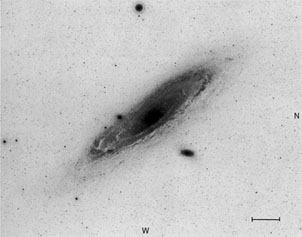
NGC 224 M31 P48-0-Hendricks SbI-II -21m.61L -297 km/s |
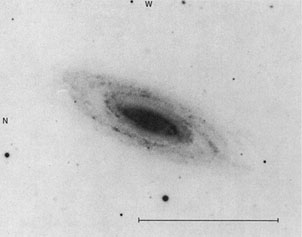
NGC 615 P200-1077-S Sb(r)I-II -21m.59 1858 km/s | 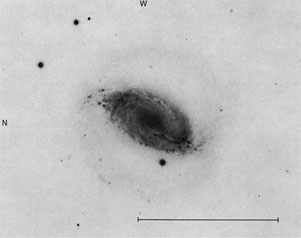
NGC 3504 P200-1169-S Sb(s)/SBb(s)I-II -21m.11 1535 km/s |